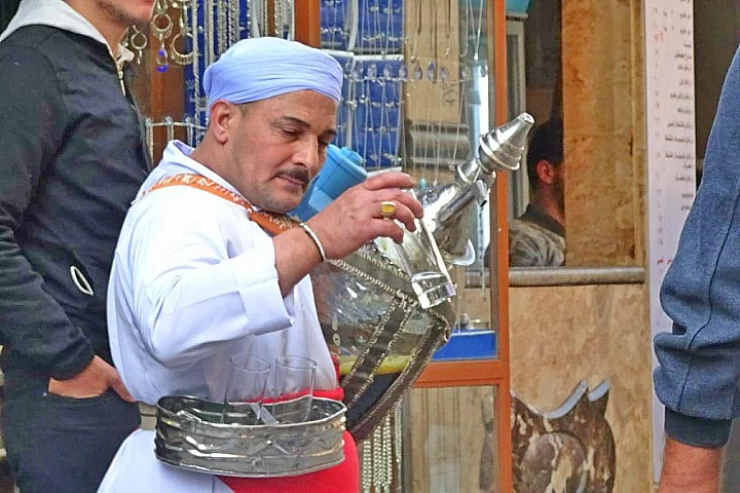
About Luxor Governorate in Egypt
About Luxor Governorate in Egypt
The South Upper Egyptian area is home to the Egyptian governorate of Luxor. Its capital is Luxor, which was formerly Thebes, the capital of Egypt throughout multiple pharaonic eras. Its centers and cities are spread over both sides of the Nile River.
The said governorate was established by Presidential Decree No. 378 of 2009, which was promulgated on the 9th of December of that year. Apart from the specific artifacts exhibited in the Luxor Museum, the governorate possesses a unique treasure of ancient sites, many of which stand in a fairly good condition. These sites include Luxor Temple, Karnak Temples, Valley of the Kings, Valley of the Queens, Funerary Temples, Esna Temple, and others. Thebes in Egypt is the provincial capital which would for that matter serve as the capital of Egypt till the advent of the Sixth Dynasty. Thereafter, he shifted it to Minaf up north.
The capital of the governorate is Luxor, which was previously known by many names in ancient times, such as the City of the Hundred Gates, the City of the Sun, the City of Light, and the City of the Scepter "Wast." The Arabs called Luxor because of its numerous palaces, or "temples." Luxor's human legacy has played a significant role in connecting the modern world with the ancient Egyptian civilization, which is why it draws a significant portion of Egypt's inbound tourists. In 2016, Luxor was named the world's tourism capital, and in 2017, it was named the capital of Arab culture.
Up until May 20, 2015, the governorate's National Day was observed on December 9. However, on that day, the Council of Ministers decided to move the celebration to November 4, the anniversary of Tutankhamun's tomb's discovery.
The governorate spans latitudes 36–25 N and 33–32 E, with a total area of 2959.6 km². Administratively, it is separated into Luxor City, Bayyadia Center, Qurna Center, Arment Center, Al-Toud Center, Esna Center, New Luxor City, and New Thebes City.
Ancient times
The current structure of the Luxor Governorate closely resembles the fourth region of ancient Upper Egypt, known as the "Wast" or "Scepter" region, which was also the name of the capital and comprised the city of the dead on the left (the funerary temples and necropolis) and the city of the living on the right (Luxor and Karnak). The area was made up of four cities: Medamud, Tod, Thebes, and Aion or Aon (now Arment), which served as the region's capital prior to the relocation of the provincial center.
Thebes was located on a vast fertile plain where the eastern desert recedes to the east and the river course was wide between it and the western shore where the western desert approaches the Nile River, on the banks of which an ancient civilisation was built, as evidenced by vast temples, huge edifices and towering obelisks.
Human history in this region dates back to the Paleolithic era. In the pre-dynastic era (4000-3000 BC), the people of the city took up residence to the north and south of the current Qurna area. In the Old Kingdom (3000-2100 BC), Thebes became an integral part of Egypt, and in the Sixth Dynasty, it became the headquarters for the administration of Upper Egypt or the fourth province of Upper Egypt, and its status rose during the twenty-first century BC.
During the Eleventh Dynasty, after its rulers subjugated the rulers of the other provinces, and after the Second Transition, it was also the House of Thebes that was able to evict the Hyksos invaders from ruling Egypt and unify its provinces once again
The Middle Ages
Christianity began to spread in Egypt during the second century AD, and after 392 AD, pagan rituals were completely banned. At least six churches were built in Luxor, traces of which still remain today, and more than one temple was converted into a church.
During the Islamic era, a Coptic monastery was constructed inside and above the Deir el-Bahri temple, and a church was constructed in the northern corner of the first courtyard of Luxor Temple. In 640 AD, Islam entered Egypt, and an archaeological cache dating back to the Mamluk era was recently discovered during the excavation of the Sphinx Road north of the first pylon of Luxor Temple.
Modern times
Luxor Governorate is one of Egypt's administratively newly established governorates, as its urban centres were previously distributed between Qena and Esna districts, which were first formed in 1241 AH through the division of Jarja Province into four districts: Assiut, Jarja, Qena, and Esna.
Since that date, the two directorates were sometimes supervised by two directors and sometimes joined under one director for various reasons until they finally separated on 25 October 1868 for the fifth and final time, and the Esna directorate with its four centres (Esna, Edfu, El Kanouz, Halfa) remained independent for about twenty years until 1888, when the directorate was abolished and the Esna centre was attached to the Qena directorate and the other three centres formed a new directorate under the name of Border Directorate.


















